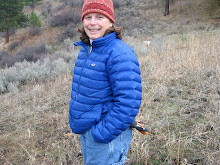 Over the weekend, the North Cascades National Park announced that unless Congress legislatively directs the National Park staff otherwise, the Park is not only going to prevent volunteers from stocking high alpine lakes within the National Park boundaries with trout triploids, it will also eradicate the current fish within those lakes. The North Cascade National Park's reasoning is those fish are not native to the high alpine lakes. In fact, in their opinion, no fish are native.
Over the weekend, the North Cascades National Park announced that unless Congress legislatively directs the National Park staff otherwise, the Park is not only going to prevent volunteers from stocking high alpine lakes within the National Park boundaries with trout triploids, it will also eradicate the current fish within those lakes. The North Cascade National Park's reasoning is those fish are not native to the high alpine lakes. In fact, in their opinion, no fish are native.The Park staff are supported in this by the North Cascades Conservation Council, a wilderness advocacy group, who believes the "lakes should be restored to their natural state."
Here is my question: what is natural? The North Cascades have been hiked, climbed, ridden over and through by humans for centuries. Native Americans hunted deer and bear, gathered berries, cut the timber and more than likely fished the rivers. English, French, and American fur trappers scoured the area, gold miners panned, and boosters sought to make money off the Swiss Alps-like beauty. More than likely there is very little land that has not witnessed some sort of human activity. We have altered the landscape and the place has altered us.
To add to this issue, the fish stocking has been taking place for over 40 years, long before conservation advocates stood over a table drawing lines on a map defining the North Cascades National Park. In other words, the fish stocking preceded the creation of the Park. Lines on a map, after all, are arbitrary. Ironically, just outside the boundaries, the United States Forest Service will allow fish stocking in the high alpine lakes within their jurisdiction.
Meanwhile, the National Park Service complains that visitors have dwindled in the parks. National Park folks tend to believe it's because children do not want to go outside anymore. However, note that numbers for fishing and hunting are down. I think there is another reason that people make other choices.
Reaching the main entrance of any National Park these days you are delivered a set of "rules," along with admonishments about fishing, hunting, walking dogs, campfires...you get the drift. We no longer have parks, we have museums. As a result, people don't go because the recreation seems so constricted.
Several years ago I wanted to fish a section of the fabled Yellowstone River within the Yellowstone National Park boundary. I practice catch and release fly fishing. Think Brad Pitt and A River Runs Through It. When I pulled into a parking area, rigged up, I was told by another visitor that there was a sign: No Fishing. I asked a ranger, way up the road, and he said: "we don't allow fishing because some people don't think it's scenic." I kid you not.
We are in a sad place when we decide what is natural and where it "belongs." To not be able to look at trout in a lake, planted or not, as wild, means we have truly separated ourselves from nature. That we continue to have some 19th century ideal of natural as something other than the Douglas fir outside my window, the Crow that just flew off the rooftop, or the Flicker attempting to find it's mate trilling down the street. Natural, apparently, can only be in some humanly designated pristine sport, which incidentally, isn't really pristine.
It's as if we have to have an either/or. Pristine/cultured, virgin/...well you know. And nature isn't really that way. Nature and what is natural is all around us. And we should be encouraging people to get outside, hike 12 miles, burn some calories, and catch a natural fish in a gorgeous lake. It doesn't get much better.




You bring up some valid points that also occur in alpine areas of Europe. How can you decide what is a "natural" state when an area has been human influenced for so long? Perhaps we can base our management on mimicking how nature operates, a sort of ecological-based management, but still allowing the multiple uses man requires.
ReplyDelete